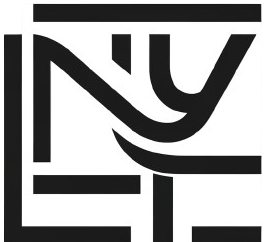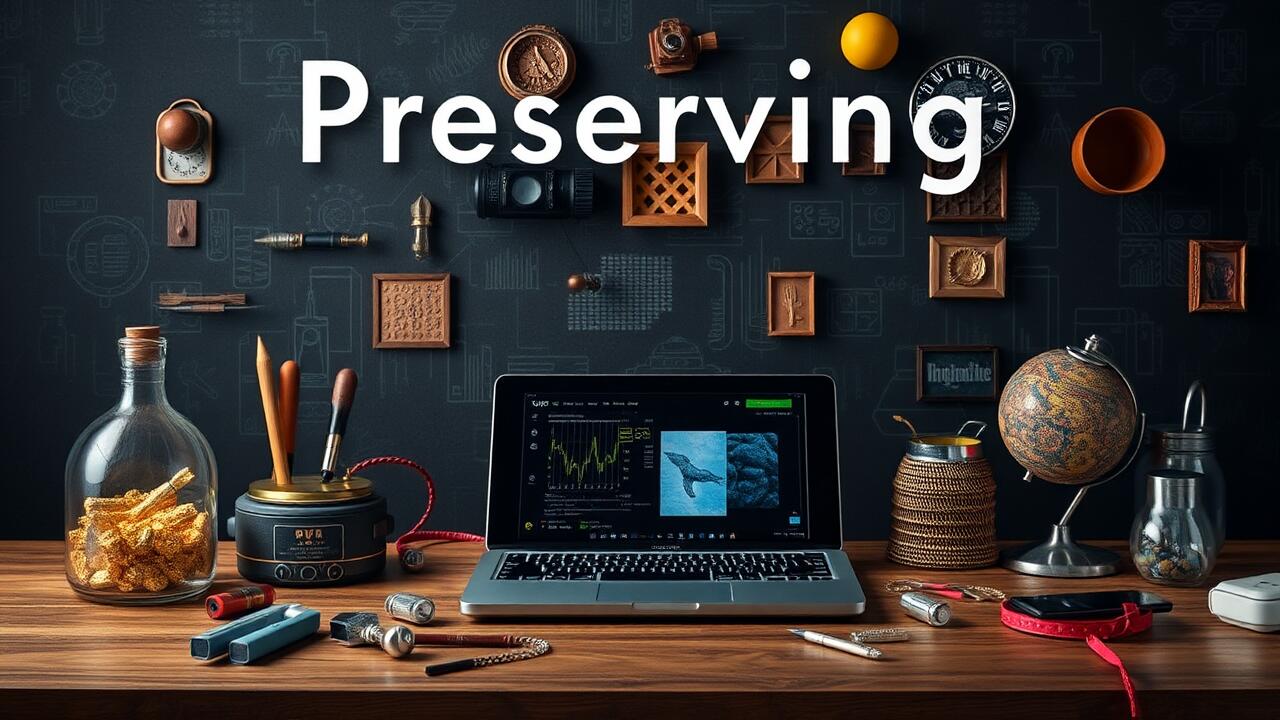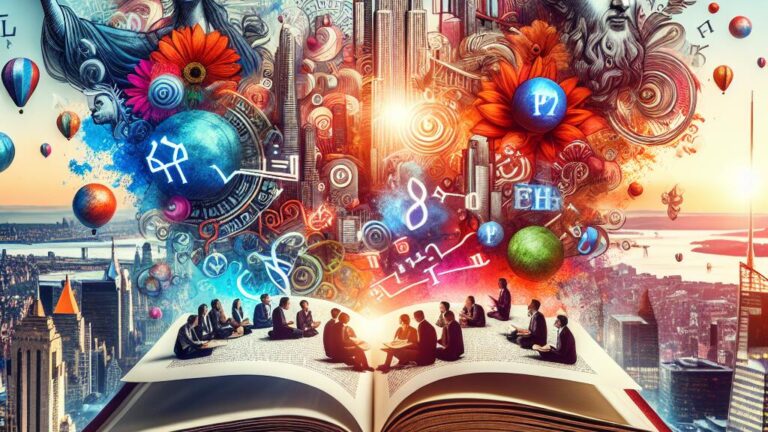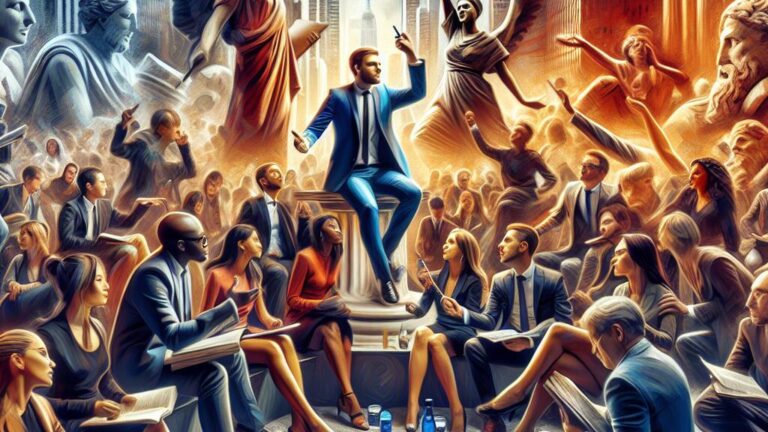Preserving Digital Art: Challenges and Strategies for the Future
Table Of Contents
Preserving Digital Art: Challenges And Strategies For The Future | Preserving Digital Art: Key Challenges and Strategies for Future Preservation
Key Takeaways
- Recognizing the significance of safeguarding digital creations
- Identifying primary obstacles in the maintenance of digital artworks
- Approaches for successful conservation efforts
- The contribution of organizations in the preservation process
Preserving Digital Art: Challenges And Strategies For The Future | Understanding the Importance of Preserving Digital Art
The preservation of digital art represents a complex intersection of technology, culture, and creativity. As digital artworks evolve through various forms, including digital sculpture and multimedia art, they stand as vital components of our contemporary artistic landscape. The challenges posed by technological obsolescence and changing digital formats require innovative strategies to ensure the longevity of digital heritage. Digital processing methods and the dynamic nature of electronic art necessitate robust preservation efforts that can adapt to the ever-changing digital domain. Understanding the importance of preserving these unique forms of expression is crucial, as they not only reflect current artistic trends but also shape future cultural narratives. Addressing the challenges associated with preserving digital art demands a collaborative approach among artists, institutions, and technologists, underscoring the need for a comprehensive framework focused on the future of digital arts.
Preserving Digital Art: Challenges and Strategies for the Future | The Evolution of Digital Art
The evolution of digital art reflects a continuous transformation of how artists express their creativity through various forms of digital media. From computer art and interactive art to digital imaging and internet art, these works of art have challenged traditional notions of what constitutes art. As artists experiment with new technologies, the importance of preserving this digital information becomes evident. As Preserving Digital Art: Challenges and Strategies for the Future highlights, the challenge lies in ensuring that these state-of-the-art creations, whether they are digital music or digital paintings, remain accessible for future generations.
As new media art continues to evolve, so does the complexity of its preservation. Changing software and hardware environments can render some forms of digital media obsolete, making it difficult to access and experience these works of art. Strategies for supporting preservation efforts must take shape, focusing on issues such as format compatibility and the longevity of digital storage. Understanding the implications of preserving digital art is essential for maintaining the relevance of both historical and contemporary pieces in the ever-changing landscape of art and technology.
Why Preservation Matters
Preservation of digital art is crucial for maintaining the integrity of contemporary artwork in a rapidly evolving technological landscape. As net art and software art continue to shape the arts, the need for preservationists to adapt their strategies becomes paramount. The creative expressions found in multimedia, digital video, and cyberspace require ongoing support to ensure that future generations can appreciate the ingenuity of contemporary artists. Without effective preservation tactics, these significant contributions to the arts risk fading into obscurity.
The challenges associated with preserving digital art highlight the importance of strategic approaches. As technology advances, various forms of digital artworks face threats from obsolescence and format degradation. Preservationists must prioritize the documentation and maintenance of this art to safeguard its value and relevance. Through collaboration with artists and the implementation of robust preservation practices, the artistic legacy represented in the digital realm can thrive. Preserving Digital Art: Challenges and Strategies for the Future is not merely a task but a vital endeavor for the sustenance of creativity in the digital age.
| Challenge | Impact on Preservation | Proposed Strategy |
|---|---|---|
| Technological Obsolescence | Older software and hardware may no longer support the original digital art. | Regular updates and the use of emulation technologies. |
| Format Degradation | Digital files can deteriorate over time, leading to loss of quality. | Implementing routine checks and migrating files to stable formats. |
| Lack of Documentation | Inadequate records can lead to misunderstandings of the artist’s intent. | Promoting thorough documentation during the creation process. |
| Collaboration Deficits | Limited communication between artists and preservationists can hinder efforts. | Encouraging active partnerships to update preservation techniques. |
Main Challenges in Preserving Digital Art
The landscape of preserving digital art is fraught with significant hurdles. As artistic expressions increasingly shift to computer-generated images and electronic formats, the risk of technological obsolescence looms large. Current copyright laws often do not fully encompass the complexities of digital works, complicating the task of safeguarding these creations. Initiatives like Google Arts & Culture aim to provide platforms for artists but face challenges related to appropriateness of technology and the long-term sustainability of digital art forms. Digitization efforts can inadvertently lead to issues of deterioration, especially if formats and software dependencies are not addressed. As artists and institutions strive to innovate within the fine arts, the approach to preserving digital art must evolve through strategies that acknowledge these pressing challenges.
Technological Obsolescence
The rapid pace of technological advancement poses significant hurdles in preserving digital art. As software and hardware evolve, many formats become obsolete, rendering older digital artworks inaccessible. This creates a dilemma for digital art preservation, as the techniques and tools used to create and maintain these works may no longer be supported. Digital-born artworks, which thrive in a constantly changing digital world, require continuous updates to remain viable. This challenge underscores the importance of developing effective strategies for preserving digital art heritage.
The dilemma of technological obsolescence extends beyond mere accessibility. The reliance on specific software or hardware can jeopardize the longevity of digital works. Artists may find that their digital art—art created with innovative software—is at risk if those platforms are discontinued or if file formats become unsupported. To counteract these risks, digital art editorial practices must adapt and evolve. By embracing a proactive approach to digital art preservation, stakeholders can mitigate the risks associated with technological changes while ensuring that digital creativity endures for future generations.
Format and Software Dependencies
The digital age brings unique challenges in preserving digital art, particularly concerning format and software dependencies. Artists often create pieces in specialized applications tailored for specific projects, including digital sculpture and electronic art. Over time, these applications may become obsolete or unsupported, leaving digital works trapped in outdated formats. Digital video art, internet-based art, and copied art face similar risks. A lack of standardization in formats can hinder the long-term accessibility and usability of these artworks, complicating efforts in preserving digital art: challenges and strategies for the future.
Several preservation strategies must be implemented to combat the risks posed by format and software dependencies. Art institutions and digital art repositories must create guidelines for selecting sustainable formats that ensure compatibility with future technologies. By prioritizing the adoption of standardized formats and embracing flexible preservation techniques, curators can safeguard the integrity of digital creations. Understanding the implications of format dependencies is crucial for all involved in preserving digital art, enabling a more robust approach to the ongoing challenges of this evolving art form.
- Understanding format compatibility is essential for long-term preservation of digital art.
- Encouraging artists to use open and widely-supported file formats can mitigate risks.
- Regularly updating software used in digital art creation helps prevent obsolescence.
- Collaborating with technology experts can inform better preservation strategies.
- Documenting the software and hardware used in creating digital art assists future preservation efforts.
- Art institutions should invest in training staff on digital preservation practices.
- Engaging the artist community in discussions about sustainability can lead to better practices overall.
Deterioration of Digital Media
The physical media that stores digital art is susceptible to degradation over time. This poses significant challenges in the context of Preserving Digital Art: Challenges and Strategies for the Future. Today, software art and creative works, such as virtual sculpture and art games, rely on specific technologies that may not remain viable in the future. As the original hardware and software become obsolete, these artworks risk becoming inaccessible, threatening the integrity of the entire artistic practice.
Implementing a powerful preservation strategy is crucial to mitigate the deterioration of digital media. A well-documented technology can help ensure that the necessary systems for accessing artworks remain intact. This involves both preserving the artwork itself and maintaining the environment in which it operates. Strategies should encompass a comprehensive understanding of the conditions required for various artworks, ensuring that the evolving landscape of digital art can be sustained for future generations.
Strategies for Effective Preservation
Effective strategies for preserving digital art are critical in the context of the evolving landscape of artistic creation. As contemporary art genres like net art, game art, and life art proliferate, the need for robust preservation methods intensifies. Important preservation challenges arise from the multimedia elements embedded in these works, which often depend on specific software or platforms that may become obsolete. By implementing file format standardization and maintaining regular backups, the web-artist community can ensure that artworks remain accessible over time. Metadata management also plays a vital role in documenting the nuances of digital creations, creating a comprehensive archive that supports the longevity of these forms of art. Addressing the complexities of preserving digital art is essential for securing its place alongside traditional physical artworks, thereby affirming its significance in the contemporary artistic narrative.
File Format Standardization
Standardizing file formats is crucial for preserving digital art as it ensures compatibility across various platforms and technologies. Artists often utilize new technologies and software for their artistic activity, leading to a diverse range of file types. Without a unified approach, the preservation process becomes complicated and may jeopardize long-term preservation. Traditional art forms have a relatively stable preservation structure, whereas digitized images and animation art risk becoming inaccessible when certain technologies become obsolete.
The technology discipline gathers insights from both artists and preservationists to recommend best practices for file formats. Choosing widely accepted formats can facilitate better archiving within galleries and institutions. This strategic approach helps mitigate the risks associated with the rapid evolution of digital media, ensuring that significant artistic activity remains accessible for future generations. By prioritizing standardization, stakeholders in Preserving Digital Art: Challenges and Strategies for the Future can foster a robust framework for safeguarding these valuable digital creations.
Regular Backups and Redundancy
Regular backups are essential for preserving digital art, especially given the challenges posed by temporary media. Contemporary practices often rely on fashionable tools that may lead to technological obsolescence. For artists and galleries, maintaining authentic versions of artworks through regular copies can safeguard their aesthetic material. This approach is critical in the context of Preserving Digital Art: Challenges and Strategies for the Future, where database art can be particularly vulnerable to loss if backups are not routinely established.
Redundancy measures enhance the protection of digital artworks, ensuring that multiple copies exist across various locations. By employing sustainable formats, creators can mitigate the risks associated with technological versioning. This preservation strategy becomes crucial as it not only assists in maintaining the authenticity of artworks but also contributes to the overall documental heritage of our time. The proactive stance of regularly backing up works aligns with the overarching goal of Preserving Digital Art: Challenges and Strategies for the Future, emphasizing the need for robust practices in caring for contemporary art.
Documentation and Metadata Management
Effective documentation and metadata management play a crucial role in preserving digital art, especially as artists experiment with tween art and interactive works. Accurate metadata ensures that future researchers can trace the origins and context of digital creations. Unique tools, including free tools like Google Arts, can facilitate the cataloging process. By meticulously documenting elements like the artwork telegarden and the technologies involved, collectors and institutions can provide insights into the creative expressions of the past.
The preservation of digital art is hindered by the challenges posed by obsolete technologies and the rapid evolution of software formats. Without proper documentation, restoration efforts for virtual objects become increasingly difficult. Comprehensive metadata can guide future generations in understanding the significance and context of digital works. As the art world continues to evolve, focusing on thorough documentation will be vital for maintaining the integrity of these creative expressions for posterity in Preserving Digital Art: Challenges and Strategies for the Future.
The Role of Institutions in Preservation
Institutions play a pivotal role in preserving digital art, particularly as it faces unique challenges outlined in Preserving Digital Art: Challenges and Strategies for the Future. Many galleries are adapting their strategies to include not just traditional art forms but also digital sculptures and installations, which require specific restoration processes to maintain their artistic results. As certain technologies become obsolete, the need for ongoing technological support from institutions grows, ensuring that artists can navigate new formats with ease. Collaborating with artists and collectors allows institutions to foster a culture of awareness about gallery etiquette and the necessary tools for preservation. Resources such as the e-conservation magazine highlight advancements in the field, underscoring the importance of institutional involvement in safeguarding this vital aspect of our digital heritage for the future.
Libraries and Archives
The role of libraries and archives in preserving digital art cannot be overstated. As guardians of cultural heritage, they face significant challenges such as technological obsolescence and the rapid evolution of digital formats. Innovative approaches are necessary to ensure the integrity of digital works. This includes embracing various platforms and devices to create comprehensive collections. Projects focused on conservation strategies are vital for maintaining the longevity of digital content, allowing future generations to appreciate these artistic endeavors without the fear of degradation.
Collaboration plays a crucial role in enhancing the effectiveness of preservation efforts. By partnering with artists and collectors, libraries and archives can gain insights into the original intent behind digital works. This partnership fosters the development of tailored strategies for preserving diverse formats while addressing the potential for recreation. Effective documentation and metadata management become essential components of any preservation project. Through dedicated efforts, institutions can safeguard digital art from emerging challenges, ensuring its accessibility and relevance for years to come.
Collaboration with Artists and Collectors
Engaging with artists and collectors is crucial for preserving digital art. Their insights on media and format variations can greatly enhance preservation strategies. Artists often have specific intentions for their work, which can guide the creation of e-conservation techniques. Collaborating with these creators allows for a deeper understanding of the contexts surrounding artworks, helping institutions to search for and secure storage solutions that honor the original vision. This partnership enables a reinterpretation of preservation practices that reflect the dynamic nature of digital creations.
Institutions can also benefit from the submissions and feedback of collectors who have experience with various digital art platforms. These collectors often possess valuable knowledge regarding the longevity of different formats and the challenges they present. By working together, artists, collectors, and institutions can introduce innovative methods to ensure that digital works are preserved for future generations. This collaboration creates a symbiotic relationship where the mastery of preservation techniques meets the evolving landscape of digital art, ensuring that the legacies of these creations endure.
Conclusion
The journey of preserving digital art involves navigating various challenges and implementing effective strategies. As we explore Preserving Digital Art: Challenges and Strategies for the Future, it becomes clear that understanding technological obsolescence and the impact of format dependencies is vital. Institutions like libraries and archives play a crucial role in this endeavor, collaborating with artists and collectors to develop a comprehensive approach. It is essential to adopt strategies such as file format standardization and robust documentation to ensure that this unique form of expression continues to figure prominently in our cultural heritage. Preserving Digital Art: Challenges and Strategies for the Future requires a concerted effort to maintain this art form for generations to come.
FAQS
How does the digitisation of contemporary platforms affect the preservation of digital art and its associated challenges?
The digitisation of contemporary platforms impacts the preservation of digital art as it introduces a variety of technological advancements that can affect how artwork adopts new forms. Digital technology and electronic arts intermix today create both opportunities and challenges for preserving state of the art pieces. Furthermore, digital art poses unique challenges that require appropriate technology to ensure that artwork, such as digital sculpture and net artwork, remains accessible and relevant. This ongoing evolution of artistic practices means that preserving electronic art today demands a keen understanding of certain technology and the art—and science involved in maintaining these digital masterpieces.
What are the key considerations for preserving various forms of digital art today, including digital cinema, electronic art, and digital sculptures?
Preserving digital art today involves addressing multiple challenges related to technological versions of art forms such as digital cinema, electronic art, and digital sculpture installations. Key considerations include ensuring the longevity of the software used in these artworks, maintaining the integrity of whole art pieces, and strategizing for future technological changes that may affect electronic art. By focusing on these aspects, artists and institutions can better safeguard their digital art—and its potential evolution over time.
What are the essential factors to consider when preserving forms of digital art such as electronic art and digital sculptures, especially with the advancements in software art and technology today?
Today, the preservation of digital art, including electronic art and digital sculptures, requires an understanding of the evolving nature of software art and the technologies used to create these forms. It’s crucial to address the technical challenges that arise, ensuring that the artwork remains accessible and intact as technologies change. An introduction to the best practices in preserving these forms of art can also provide valuable insights into maintaining their integrity over time.
What are the current challenges faced in preserving digital sculpture and electronic art in the context of today’s software art advancements?
The preservation of digital sculpture and electronic art today is increasingly complicated due to the rapid evolution of technology and software art. These forms of art require careful consideration of their unique characteristics and the potential obsolescence of the platforms they are created on. Challenges include ensuring the long-term accessibility of created works and addressing the changes in format and media that can affect the integrity of the original pieces, which is crucial in the preservation of nce art and form art.
What strategies can be implemented today to effectively preserve digital sculptures and electronic art, considering the challenges posed by today’s software art advancements?
Effective preservation strategies for digital sculptures and electronic art today involve understanding the inherent challenges posed by today’s software art. This includes implementing regular software updates, creating comprehensive documentation of artistic intent, ensuring the accessibility of digital files, and investing in robust storage solutions. These measures help ensure that the integrity of digital sculptures and electronic art is maintained despite the evolving technology landscape.
What are the most effective approaches for curators to preserve digital sculpture and electronic art, especially in the context of today’s software art developments?
Curators can adopt a variety of effective approaches to preserve digital sculpture and electronic art today software art developments, such as employing regular software updates, utilizing emulation techniques, and storing original files in stable digital formats. These strategies help address the unique challenges posed by the evolving nature of technology and ensure the long-term accessibility of these artworks.
How can artists ensure the long-term preservation of digital sculpture and electronic art amidst evolving technologies?
Artists can employ several strategies to ensure the long-term preservation of digital sculpture and electronic art. This includes regularly updating the software and hardware components necessary for displaying their work, creating thorough documentation that details the creation process and technical requirements, and collaborating with institutions specializing in digital preservation. It’s also essential to consider the evolving nature of technology and to adapt preservation methods accordingly, ensuring that these forms of art remain accessible and intact for future generations.
What steps can artists take to maintain the quality and integrity of digital sculpture and electronic art, particularly when confronting dynamic changes in technology and software?
To ensure the long-term viability of digital sculpture and electronic art, artists should adopt robust preservation practices, including regular updates of software, utilizing cloud storage solutions, and engaging with communities that focus on the longevity of digital art. Addressing something like the emerging challenges in technology and software is also crucial for safeguarding their works.
What innovative techniques can be used to enhance the preservation of digital sculpture and electronic art in modern galleries?
Innovative techniques such as environmental control, regular software updates, and digital asset management can significantly enhance the preservation of digital sculpture and electronic art in modern galleries. Implementing these strategies ensures that the integrity and quality of the artworks are maintained over time, even as technology continues to evolve.
What unique methods can be employed to enhance the preservation of both digital sculpture and electronic art in galleries today?
To enhance the preservation of digital sculpture and electronic art, curators can explore innovative techniques such as implementing state-of-the-art archival software, employing climate control systems to protect against environmental factors, and regularly updating hardware to accommodate evolving formats. Collaborating with technologists to create redundant backups and establishing clear digital preservation plans are also essential strategies to ensure the longevity of digital sculpture and electronic art collections.







